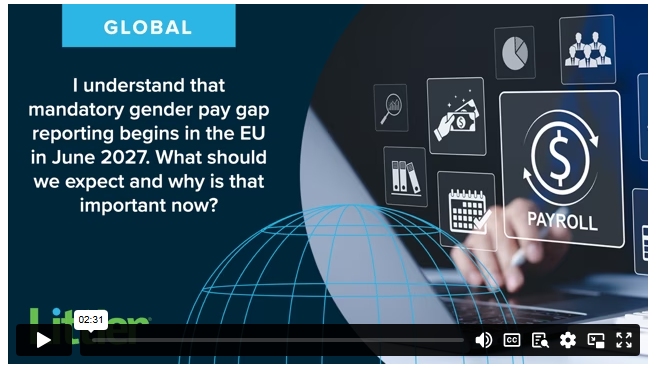- within Employment and HR topic(s)
- with Senior Company Executives, HR and Inhouse Counsel
- in United Kingdom
- with readers working within the Business & Consumer Services, Healthcare and Retail & Leisure industries
I understand that mandatory gender pay gap reporting begins in the EU in June 2027. What should we expect and why is that important now?
Under the pay transparency directive, certain employers must report information on their gender pay gap by categories of workers performing the same work or work of equal value.
Employers must provide such reports to relevant public authorities, workers, and worker representatives. Employers that have 150 or more workers will be required to submit their first gender pay gap report in June 2027 using pay information back to January 1, 2026. Employers that have 100 to 149 workers will have until June 2031.
Where the report identifies a gender pay gap of 5% or more for any category of worker, the gap cannot be justified by objective, gender-neutral criteria and it isn't remedied within six months of the date of the report, employers must conduct a joint pay assessment in conjunction with the company's worker representatives. This will involve sharing sensitive pay data and may open the door to high-value claims.
Unfortunately, deciding if roles perform the same work or work of equal value for the purpose of the report is not a simple determination. Roles that seem completely different may be deemed equal in value.
Using a famous UK case to illustrate how this may play out in the EU, female catering staff were deemed to provide work of equal value to male garbage collectors. That resulted in a huge judgment of back pay, which led to bankruptcy.
In another case involving a retail chain, female cashiers were deemed to provide work of equal value to male warehouse workers.
Categorizing employees into roles of equal value will be one of the most challenging aspects of the directive. It's a bit like comparing an apple to a pear.
It's important to understand that the reporting will use 2026 data. That means you have the opportunity now to check your data behind the scenes to identify significant gaps.
Outside legal counsel can direct any pay audit in a manner to best protect the process and findings in accordance with local privilege parameters.
So, you can do all of this behind the scenes now or do it very publicly later in conjunction with worker representatives.
The content of this article is intended to provide a general guide to the subject matter. Specialist advice should be sought about your specific circumstances.



